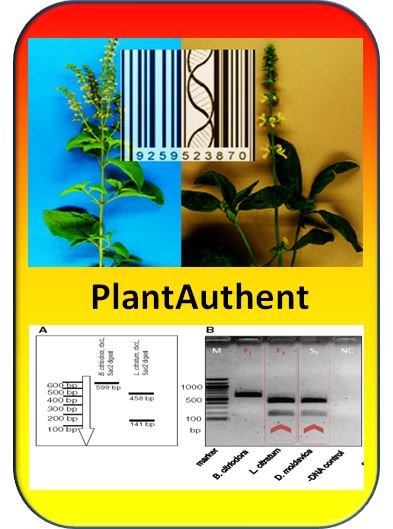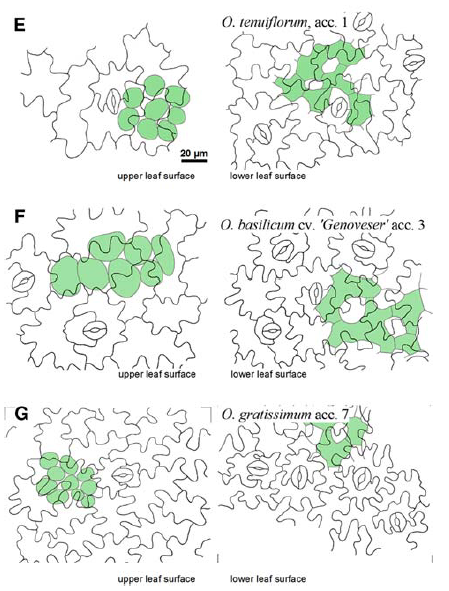Tulsi - Holy Basil
Background
Basil belongs to the Lamiaceae, one of the most diverse groups within the Flowering Plants. More than 8000 species that partially can bastardise and moreover show a variable development, pose great challenges to research and application, but also represent a tremendous potential for application and exploitation. Basil probably has been domesticated around 4000 years ago in India and since then has also been altered by breeding. The species Ocimum tenuiflorum (previously named O. sanctum) is something like the natrual pharmacy of the Indian family and due to its numerous medical effects it is not only a central functional food in Ayurveda, but even venerated as reincarnation of the deity Vishnu, such that it is grown in many households on a small altarus in the courtyards.
Since around ten years, Holy Basil is getting increasingly popular also in Europe and is mainly sold in form of tea mixtures. The rising demand, the substantial price that can be asked for Tulsi products, and the large variability of Basil species favoured the spread of surrogates. Morever, even in India, there are several species that are utilised as „Tulsi“. To add up to the chaotic situation, Tulsi comes in different types, such as „Krishna-Tulsi“ or „Vana-Tulsi“ that partially differ in their pigmentation. In addition, there are significant differences in abundance and profile of active compounds that are of medical relevance. For instance, some of these Tulsis produce occasionally Methyl-Eugenol which is allergenic for many people.
Objectives
The potential of Tulsi as functional food are substantial. To safeguard quality and to guarantee consumer protection, the Tulsi chaos has to be ordered a bit. This means in the first place:
- Development of molecular authentication that allows to discriminate reliably different species of Basil, possibly also different types of Tulsi.
- Insight into the causes for chemical variability (such as content in Methyl-Eugenol). What is genetics, what is environmental?
Prework
Based on the marker its1 we were able to build up a reference collectkion of authenticated Basil species in the Botanical Garden and we were able to develop a microscopical assay to discriminate O. tenuiflorum from its surrogates O. basilicum and O. gratissimum (Jürges et al. 2009). In the meantime, additional aczessions have been added as well as additional markers that allow to classify the Basils into different haplotypes. In cooperation with the lab of Prof. Adrian Slater (Leicester University) and Dr. Eike Reich (CAMAG AG), we investigate the relation between chemical diversity (by High-Performance Thin Layer Chromatography, HP-TLC), environmental conditions (focussing on light conditions), and genetic diversity (different molecular markers). The idea of the project ist o compare specific genotypes using different approaches side by side to reach clear answers. In cooperation with Cerovac Ltd. (Bretten) LED-illumination Chambers were developed that allow to cultivate Basil at constant photosynthetic irradiation with addition of specific light qualities to stimulate different photoreceptors: R+B (activation of Phytochrome), UV-A (activation of cryptochrome), UV-B (activation of UVR8).
Veröffentlichung:
69. Jürges G, Beyerle K, Häser A, Nick P (2009) Development and validation of microscopical diagnostics for ‘Tulsi’ (Ocimum tenuiflorum L.) in ayurvedic preparations, Eur Food Res Technol 229, 99-106 - pdf


